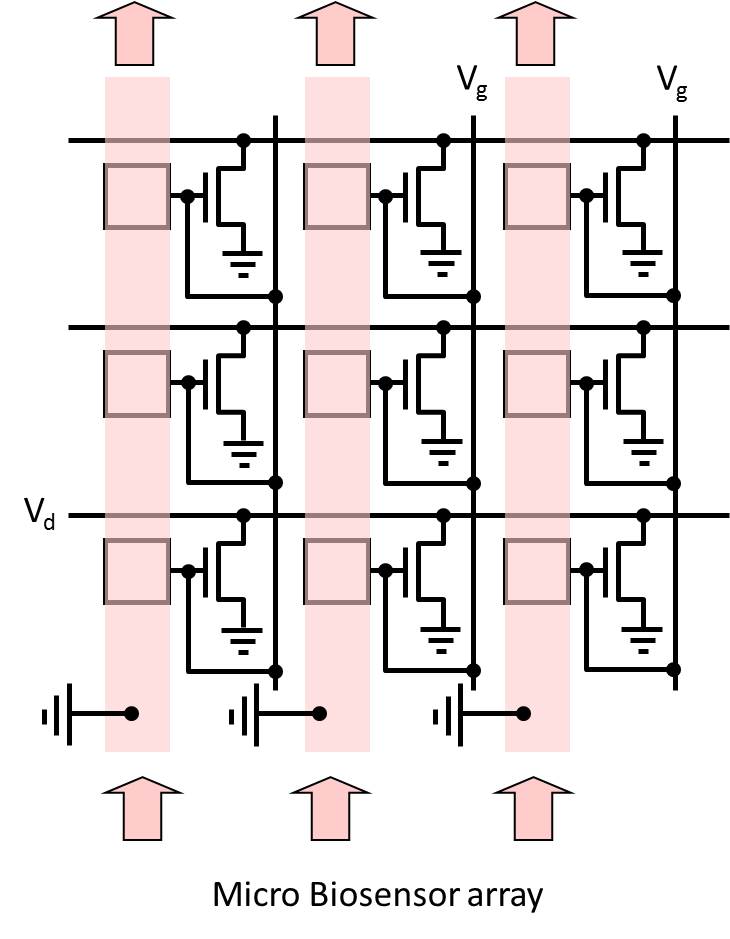|
Point-of-care biosensors


|
Biosensors combine a molecular recognition element with a
signal conversion unit. Some biosensos have been successfully commercialized
for clinical applications such as electrochemical blood glucosesensors.
Molecular biosensors are more preferred as a clinical diagnostic tool than
other methods partically because of real-time measurement, rapid diagnosis,
multi-target analyses, automation, and reduced costs. As a recent advance in
molecular biology has led to our better understanding of potential
disease-related protien biomarkers and DNA mutations, biosensors became a
promising technology for early diagnosis. Two different molecular sensing
techniques are generally employed: (1) a "lock-and-key" approach to
detect a specific analyte and (2) a "cross-reactive" or
"pattern-generation" technique to monitor the overall levels of
molecules. The ¡°lock-and-key¡± design immobilizes a specific bio-receptor on a
sensing surface, which enables the surface to form a strong and specific
chemical bond with target analytes. In
practice, however, many biosensors based on the ¡°lock-and-key¡± design suffer
from interference caused by molecules that are structurally or chemically
similar to the desired analyte. This is an unavoidable consequence of the
¡°lock¡± being able to fit many imperfect ¡°keys¡±. Additionally, biomarkers
themselves are an imperfect measure, as many biomarkers are non-specific to
particular diseases, and most diseases have more than one biomarker associated
with their incidence. Furthermore, concentration changes of biomarkers in
serum may cause unexpected interactions with other proteins making their
detection very challenging, as in the case of prostate antigen serum, for
example. These challenges lead to adopt total biomolecular distributions, rather
than aiming to detect a specific molucule, in serum for disease diagnosis. The
¡°cross-reactive¡± technique has been developed as an alternative approach for
this purpose. This method is inspired by the senses of taste and smell, and
utilizes an array of differentially responsive receptors to create response
patterns to detect target analytes when they are present at elevated levels in
media. The distinct advantage of the "cross-reactive" method is
that the individual receptors do not need to be highly specific or selective to
an analyte unlike the ¡°lock-and-key¡± method, which also requires time-consuming
and labor intensive synthesis and design of the receptors. We currently focus on developing a biosensor based on "cross-reactive" technique.
|

